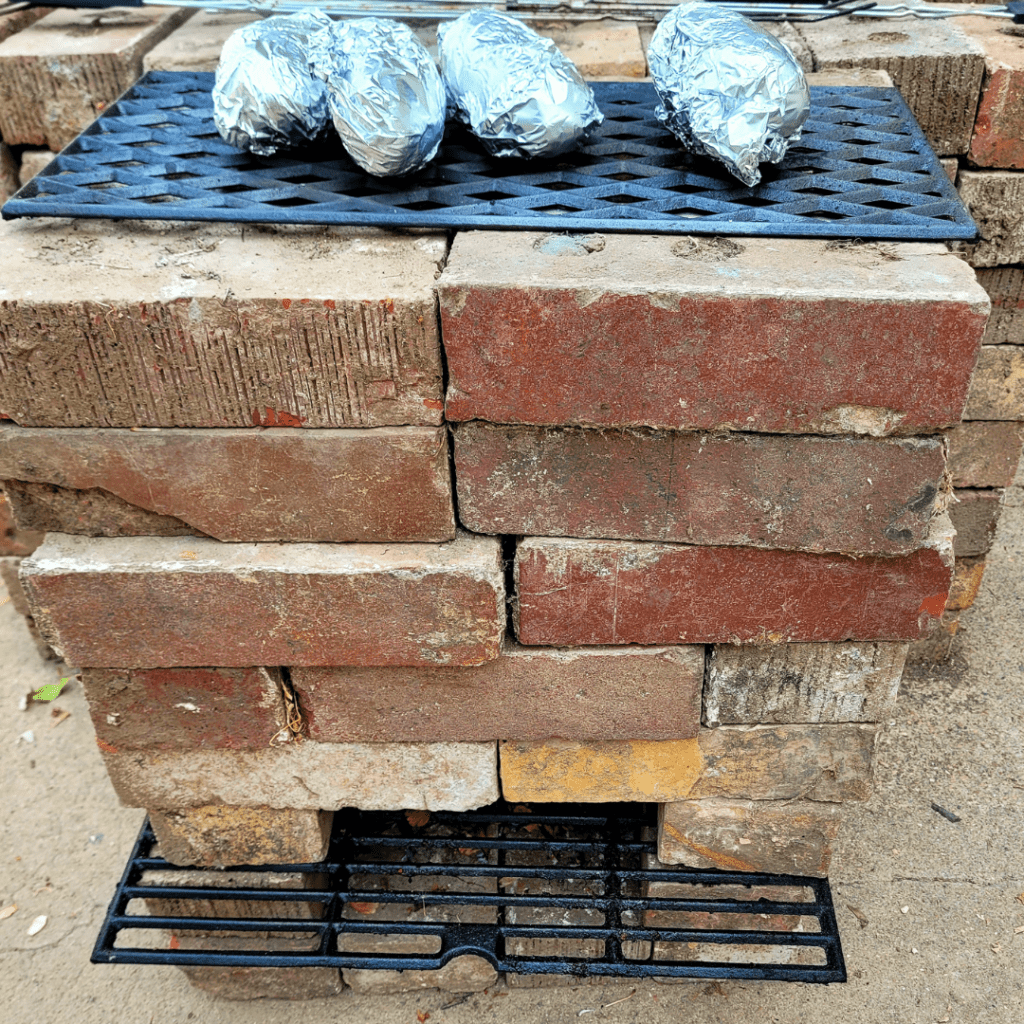Looking to go off-grid and live more self-sufficiently? Some states make unplugged living easier than others. Discover the top states for off-grid living, with insights on climate, land costs, local laws, and resources to help you thrive while reducing reliance on the grid.
Dreaming of unplugging and living life on your own terms? Off-grid living isn’t just about survival—it’s about freedom, self-reliance, and creating a life that works for you. But not every state makes it easy. From zoning laws to climate and land prices, where you choose to live can make or break your off-grid experience.
In this post, I’m sharing the best states for off-grid living, including what makes each one stand out and what to consider before taking the plunge. Whether you’re ready to buy land, build a cabin, or just explore the possibilities, this guide will help you find the right place to thrive unplugged.
This is a pinnable post. Tap or hover over any image in this post to pin to your Pinterest Boards.
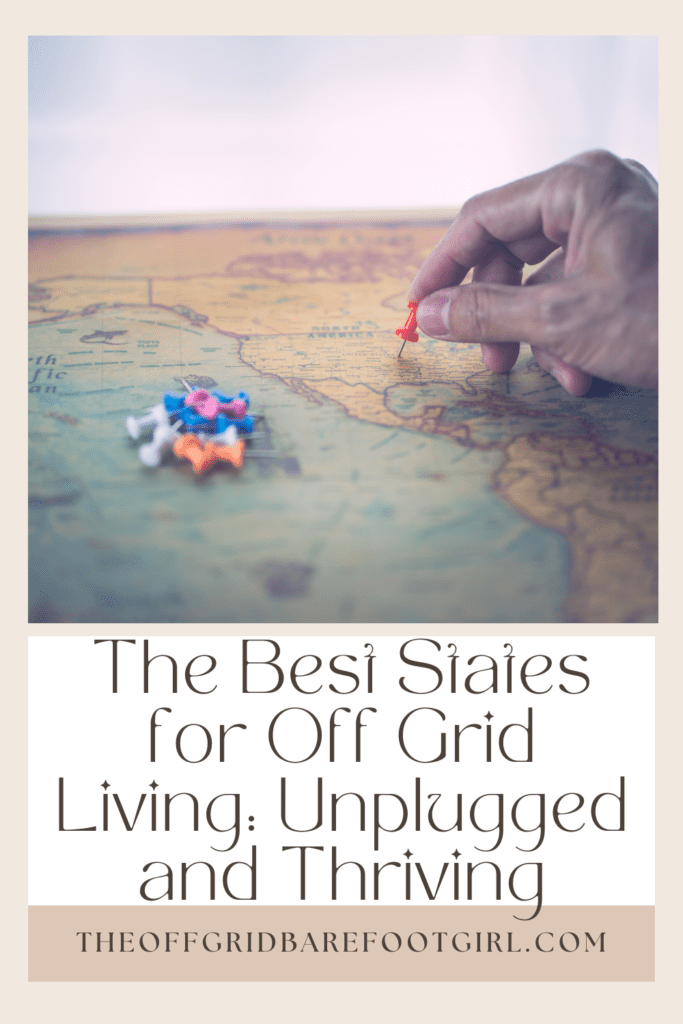
Introduction to Off-Grid Living

Brief Overview of Off-Grid Living
Imagine living in harmony with nature, harnessing renewable energy sources, and forging deep connections with your surroundings. Off-grid living isn’t just about disconnecting from the power grid; it’s a lifestyle choice rooted in sustainability, self-sufficiency, and a profound respect for the Earth. From building your own eco-friendly home to growing your own food and living off the land, off-grid living empowers individuals to take control of their lives and reduce their environmental footprint.
I hope you are as excited as I am to explore the joys, challenges, and rewards of embracing off-grid living with open arms and an adventurous spirit!
Importance of Choosing the Right State for Off-Grid Living
Choosing the right state for off-grid living is crucial for creating a fulfilling and sustainable lifestyle. Finding yourself in a place where the climate suits your preferences, the natural resources are abundant, and the community embraces your values are important factors in life. It’s about more than just location; it’s about finding a place where you can thrive independently while still feeling connected to a supportive community.
From favorable zoning laws to access to water sources and renewable energy potential, each state offers its own unique advantages and challenges for off-grid living. Let’s start by exploring the importance of selecting the perfect state for your off-grid journey, where you can truly unplug, thrive, and make a meaningful impact on the world around you.
Factors to Consider When Choosing a State for Off-Grid Living
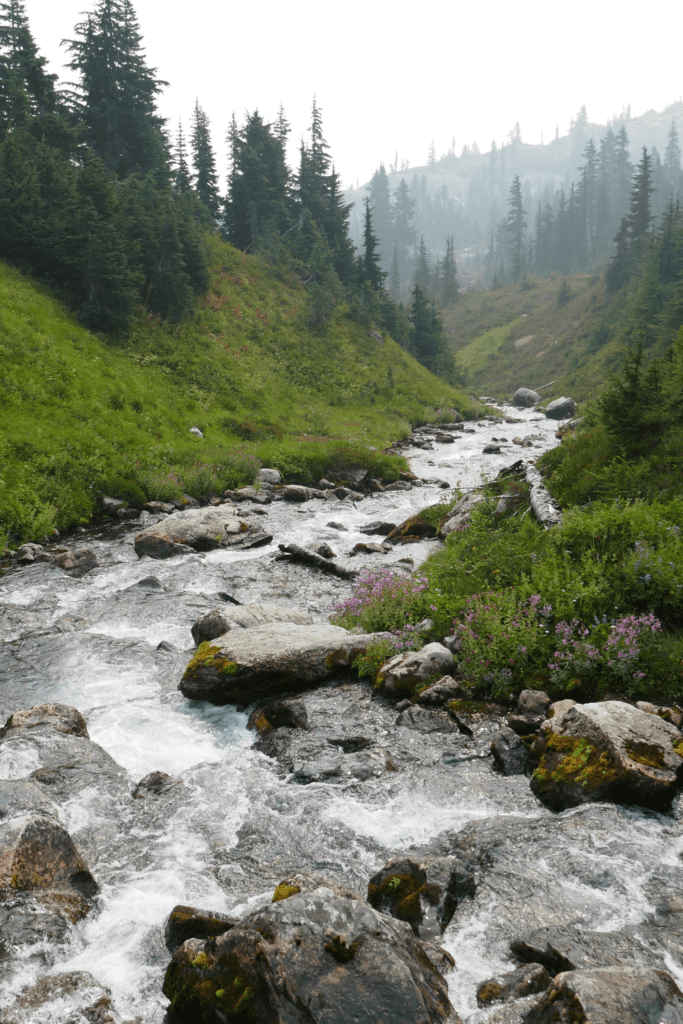
Climate and Weather Considerations
When it comes to choosing a state for off-grid living, climate and weather considerations play a pivotal role in shaping your experience. Picture waking up to the gentle warmth of the sun or the crisp freshness of a mountain breeze – your ideal climate sets the tone for your daily life off the grid. From sunny deserts to snowy mountains, each climate offers its own unique challenges and opportunities for sustainable living.
Whether you thrive in the heat of the sun or the cool embrace of the forest, finding a climate that aligns with your preferences and lifestyle is essential for creating a thriving off-grid existence. Discover the importance of climate and weather considerations in choosing the perfect state for your off-grid adventure, where you can live in harmony with nature and embrace the beauty of every season.
Access to Natural Resources
When planning your life of off-grid living, access to natural resources becomes a cornerstone of sustainability and self-sufficiency. Picture yourself surrounded by lush forests, crystal-clear streams, and fertile soil – the abundance of natural resources in your chosen state is essential for supporting your off-grid lifestyle.
From harvesting rainwater to cultivating a thriving garden and sourcing renewable energy, having access to ample resources ensures that you can live harmoniously with the land. Do your research and explore the importance of considering access to natural resources when choosing the perfect state for your off-grid journey, where you can connect deeply with nature and harness its bountiful gifts to create a fulfilling and sustainable lifestyle.
Legal and Regulatory Landscape
When learning about a life of off-grid living, navigating the legal and regulatory landscape of your chosen state is paramount. Imagine crafting your dream home nestled amidst nature’s embrace, only to find yourself tangled in a web of zoning laws and building regulations. Understanding the legal framework governing off-grid living ensures a smooth and seamless transition into your sustainable lifestyle.
From zoning ordinances to building codes and land-use regulations, each state presents its own set of challenges and opportunities. Be sure to research the importance of considering the legal and regulatory landscape when choosing the perfect state for your off-grid adventure, where you can thrive without compromising your values or vision.
Availability of Off-Grid Communities and Resources
As you research your off-grid living lifestyle, the availability of off-grid communities and resources becomes a crucial factor in shaping your experience. Imagine immersing yourself in a vibrant community of like-minded individuals, where shared values and experiences create a sense of belonging and support. Access to off-grid communities provides invaluable opportunities for learning, collaboration, and mutual aid, enriching your off-grid lifestyle in ways you never imagined.
Additionally, the availability of resources such as sustainable energy sources, organic food co-ops, and skilled tradespeople can significantly enhance your ability to thrive off the grid. Learn as much as you can about the importance of considering the availability of off-grid communities and resources when choosing the perfect state for your off-grid adventure, where you can connect with others who share your passion for sustainable living and build a fulfilling life off the beaten path.
Economic Factors
As you are analyzing your off-grid living plans, do not overlook the significant role economic factors play in shaping your sustainable lifestyle. Picture yourself beginning on your off-grid journey, filled with dreams of independence and self-sufficiency. However, it’s essential to consider the financial implications of your off-grid adventure. From the cost of land and property taxes to the expenses associated with building infrastructure and sourcing renewable energy, economic considerations can greatly impact your ability to thrive off the grid.
Yet, with careful planning and budgeting, you can find a state where the cost of living aligns with your financial means and allows you to live comfortably while pursuing your off-grid dreams. By doing a little bit of research, you can learn the importance of economic factors when choosing the perfect state for your off-grid journey, where you can achieve financial freedom and sustainable living hand in hand.
I have written an in-depth article on how to live off-grid that you should check out to help you further plan your off-grid dreams.
How to Live Off-Grid: 11 Tips to Survive and Thrive!
Top States for Off-Grid Living
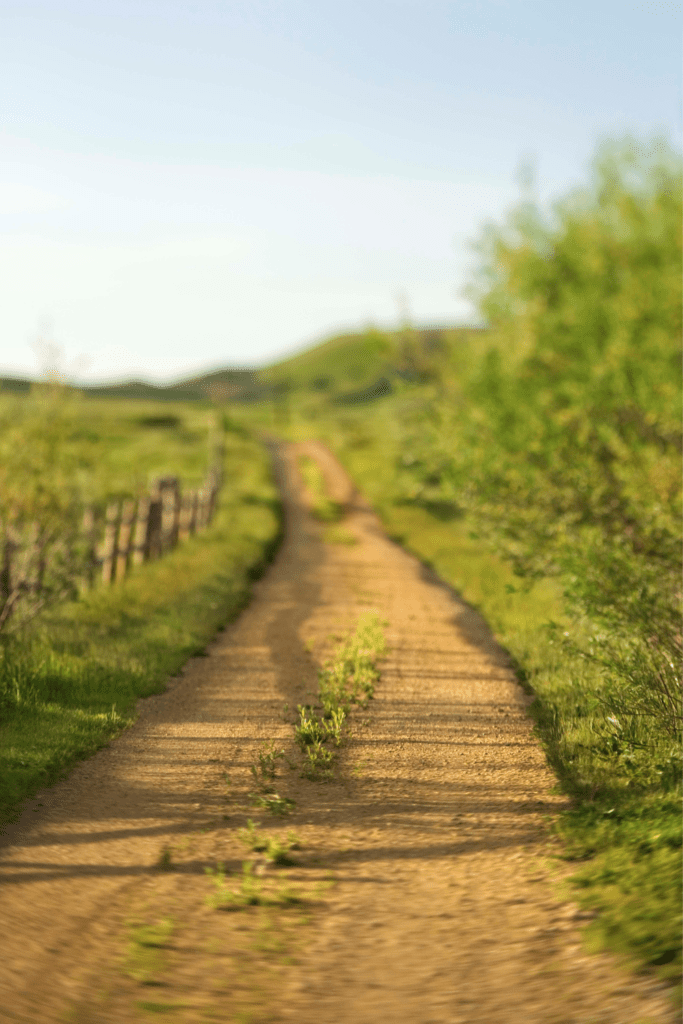
Alaska
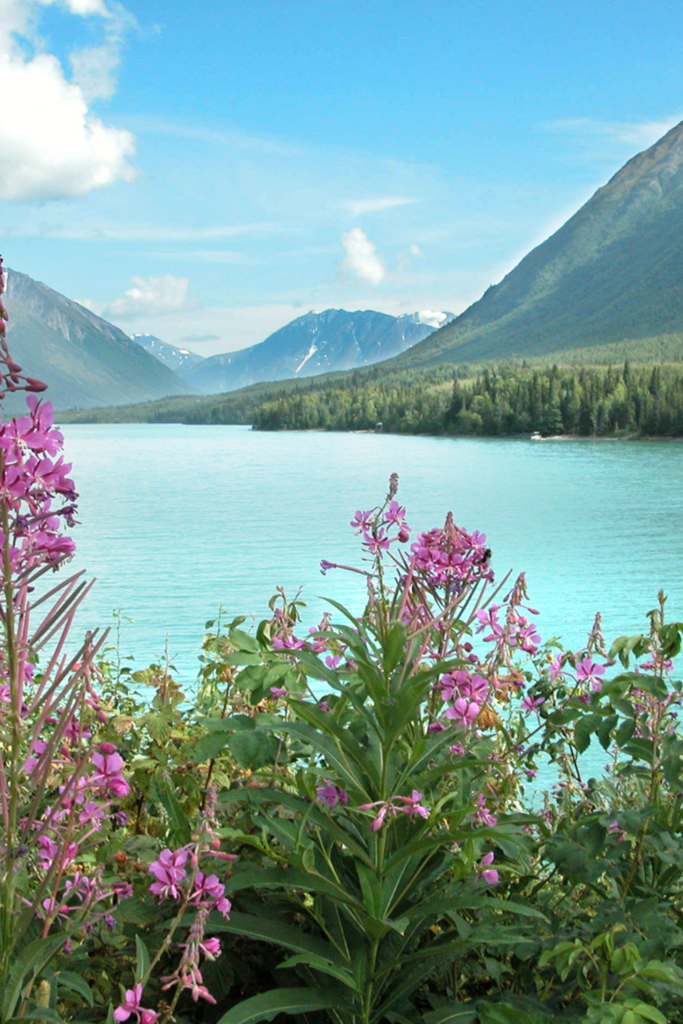
Known for its vast wilderness and abundance of resources, Alaska offers unparalleled opportunities for off-grid living. The state’s remote locations provide solitude and self-sufficiency, with ample access to fishing, hunting, and renewable energy sources.
Alaska is a frontier where off-grid living thrives amidst majestic landscapes and untamed wilderness. The allure of Alaska lies not just in its breathtaking beauty, but also in the opportunities it presents for those seeking a sustainable and self-reliant lifestyle off the grid.
Climate and Geography In Alaska
Alaska’s climate and geography offer a diverse playground for off-grid enthusiasts, from snow-capped mountains to vast forests and pristine coastlines. This diversity enables residents to harness a variety of renewable energy sources, from solar power to hydroelectricity, ensuring resilience in the face of changing seasons.
- Extreme Temperatures: Alaska experiences wide temperature variations throughout the year, with cold winters and mild to warm summers depending on the region.
- Long Daylight Hours: During the summer months, parts of Alaska experience extended daylight hours, providing ample sunlight for solar energy generation.
- Harsh Winters: Winters in Alaska can be severe, with heavy snowfall, strong winds, and subzero temperatures, necessitating robust off-grid infrastructure for heating and insulation.
- Diverse Landscapes: Alaska boasts diverse landscapes, including mountains, forests, tundra, and coastal areas, offering opportunities for varied off-grid living experiences.
- Abundant Water Resources: Alaska is home to numerous rivers, lakes, and streams, providing off-grid residents with access to freshwater sources for drinking, irrigation, and hydroelectric power generation.
- Remote and Rugged Terrain: Much of Alaska’s land is remote and inaccessible, requiring careful planning and consideration for off-grid living, especially regarding transportation and logistics.
- Coastal Influences: Coastal regions in Alaska are influenced by maritime climates, with milder temperatures and higher precipitation levels compared to inland areas, offering different off-grid living conditions.
- Wildlife Presence: Alaska is known for its diverse wildlife, including bears, moose, and salmon, which can impact off-grid living through potential encounters and wildlife management considerations.
- Northern Lights: Certain parts of Alaska offer spectacular views of the aurora borealis (northern lights) during the winter months, adding to the unique off-grid living experience.
- Permafrost: In some areas of Alaska, permafrost (permanently frozen ground) exists, posing challenges for construction and infrastructure development in off-grid communities.
Off-Grid Communities In Alaska
Alaska boasts vibrant off-grid communities, where like-minded individuals come together to share knowledge, resources, and support. Here are some off-grid communities to consider in Alaska.
- Talkeetna: The off-grid community in Talkeetna, Alaska, thrives amidst the breathtaking wilderness of the Denali region. Nestled in the shadow of North America’s tallest peak, residents embrace a sustainable lifestyle, harnessing renewable energy sources and practicing organic gardening. With a strong sense of camaraderie and a commitment to self-sufficiency, the Talkeetna off-grid community embodies the spirit of resilience and connection to nature that defines Alaskan living.
- Barrow: The off-grid community in Barrow, Alaska, braves the Arctic wilderness at the northernmost tip of the state. With its unique challenges and stark beauty, residents of this remote community rely on innovative off-grid solutions to thrive in the harsh Arctic environment. From solar power to wind turbines and ingenious insulation techniques, Barrow’s off-grid pioneers demonstrate resilience, resourcefulness, and a deep connection to the land and its challenges.
More Off-Grid Communities in Alaska
- Matanuska-Susitna Valley: The off-grid community in the Matanuska-Susitna Valley, Alaska, flourishes amidst the stunning backdrop of rugged mountains and pristine wilderness. Residents of this vibrant community embrace self-sufficiency and sustainability, harnessing renewable energy sources like solar and hydroelectric power. Through collaborative efforts and shared resources, the Mat-Su Valley off-grid community fosters a strong sense of camaraderie and resilience, embodying the pioneering spirit that defines Alaskan living.
- Cordova: The off-grid community in Cordova, Alaska, thrives along the picturesque shores of the Prince William Sound. Embracing a lifestyle of self-reliance and environmental stewardship, residents harness the abundant natural resources of the surrounding landscape. From fishing and foraging to renewable energy solutions like wind and hydroelectric power, Cordova’s off-grid community embodies resilience and connection to the rugged beauty of Alaska’s coastal wilderness.
- Fairbanks: The off-grid community in Fairbanks, Alaska, is a testament to resilience in the face of extreme conditions. Embracing the challenges of long winters and short summers, residents utilize innovative off-grid technologies such as solar panels, wood stoves, and energy-efficient designs to thrive in this northern city. With a strong sense of community and a commitment to sustainability, Fairbanks’ off-grid pioneers exemplify the pioneering spirit that defines life in the Last Frontier.
Legal and Regulatory Environment In Alaska for Off-Grid Living
Navigating Alaska’s legal and regulatory environment can present challenges, requiring careful adherence to zoning laws and building codes, especially in remote areas.
- Zoning Laws: Different municipalities in Alaska may have specific zoning regulations that dictate where and how off-grid properties can be developed. It’s essential to research local zoning ordinances to ensure compliance with land use regulations.
- Building Codes: Alaska has statewide building codes that govern the construction of residential and commercial structures. Off-grid properties must meet these codes, which may include requirements for structural integrity, electrical systems, plumbing, and insulation.
- Land Use Permits: Depending on the location and type of off-grid development, permits may be required for land use, construction, and environmental impact assessments. Obtaining the necessary permits ensures that off-grid projects comply with state and local regulations.
- Water Rights: Off-grid residents in Alaska must navigate water rights regulations, especially if they rely on natural water sources such as rivers, lakes, or wells. Understanding water rights laws and obtaining appropriate permits is crucial for legal water use and conservation efforts.
More Legal and Regulatory Environment In Alaska for Off-Grid Living
- Environmental Regulations: Alaska’s pristine environment is protected by various environmental regulations aimed at preserving natural habitats and ecosystems. Off-grid projects must comply with laws governing land use, wildlife protection, and waste management to minimize environmental impact.
- Renewable Energy Incentives: Alaska offers incentives and rebates for renewable energy projects, including solar, wind, and hydroelectric systems. Off-grid residents may qualify for tax credits, grants, or low-interest loans to offset the cost of installing renewable energy infrastructure.
- Off-Grid Septic Systems: Off-grid properties in Alaska must comply with regulations for wastewater management, including the installation and maintenance of septic systems. Understanding septic system requirements and obtaining necessary permits is essential for legal compliance.
- Fire Safety Regulations: Alaska’s remote locations and harsh climate pose unique challenges for fire prevention and suppression. Off-grid properties must adhere to fire safety regulations, including requirements for firebreaks, wildfire prevention measures, and access for emergency responders.
- Right to Access and Easements: Off-grid properties in Alaska may be subject to rights of access and easements, especially in remote or wilderness areas. Understanding property boundaries, access rights, and easement agreements is essential for maintaining legal access to off-grid properties.
- Off-Grid Living Ordinances: Some municipalities in Alaska may have specific ordinances or regulations that govern off-grid living, such as restrictions on composting toilets, rainwater harvesting, or off-grid power systems. Researching local ordinances and consulting with local authorities can help ensure legal compliance for off-grid projects.
Considering Alaska for Your Off-Grid Living
Despite these hurdles, Alaska’s relatively low population density and abundant land make it an attractive option for those willing to embrace the frontier spirit. While the cost of living in Alaska may be higher than in other states, the unparalleled sense of freedom and connection to nature make it a truly rewarding place to call home off the grid.
Montana
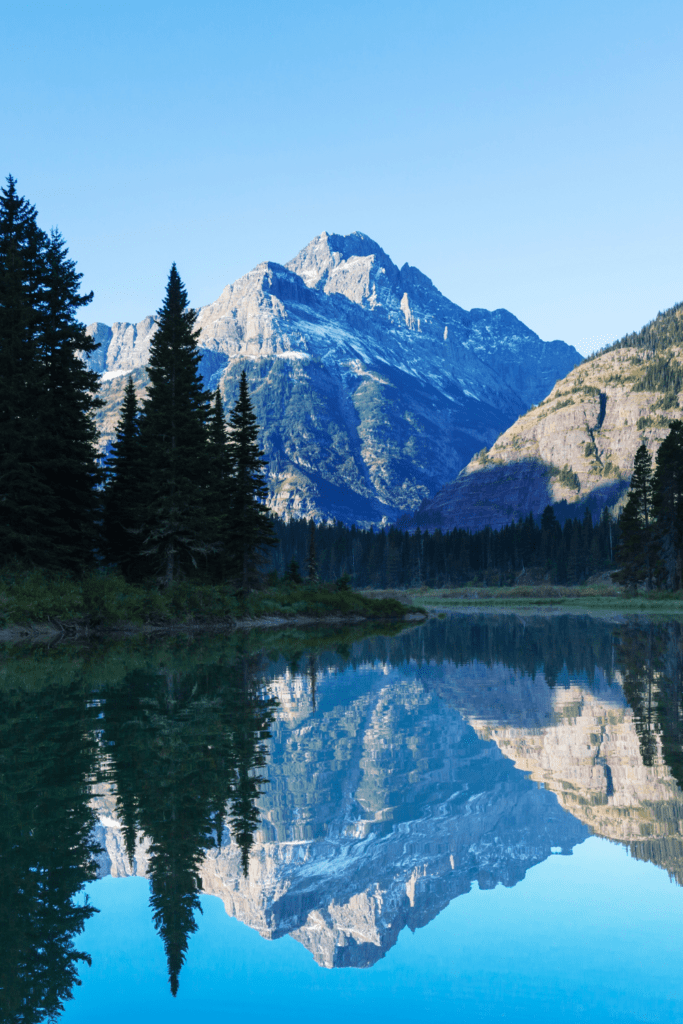
With its wide-open spaces and rugged terrain, Montana attracts off-grid enthusiasts seeking a simpler way of life. The state boasts plentiful land, favorable zoning laws, and a strong off-grid community, making it an ideal destination for those looking to disconnect from the grid.
Consider off-grid living in Montana, where the majestic landscapes and pioneering spirit beckon adventurers seeking a sustainable lifestyle. Montana’s climate and geography offer a diverse playground for off-grid enthusiasts, from the rugged Rocky Mountains to the vast plains and pristine forests. With ample sunshine and abundant natural resources, including water and timber, Montana provides an ideal canvas for crafting an off-grid paradise. Engage with the vibrant off-grid community initiatives scattered throughout the state, where like-minded individuals come together to share knowledge, resources, and support.
Climate and Geography In Montana
Montana’s climate offers a diverse range of experiences, from snowy winters perfect for cozying up by the fire to warm summers ideal for outdoor exploration. With ample sunshine and abundant natural resources, including rivers, lakes, and fertile land, Montana provides an ideal setting for off-grid enthusiasts to thrive. Whether you’re drawn to the tranquility of mountain living or the vastness of the prairie, Montana’s varied landscapes offer endless opportunities to connect with nature and embrace a sustainable lifestyle off the grid.
- Rocky Mountains: Montana is home to a significant portion of the Rocky Mountains, providing breathtaking scenery and opportunities for outdoor recreation such as hiking, skiing, and mountaineering.
- High Plains: The eastern portion of Montana consists of vast prairies and rolling hills, offering expansive views and opportunities for agricultural activities like farming and ranching.
- Continental Climate: Montana experiences a continental climate with cold winters and warm summers. This climate variation provides off-grid residents with diverse seasonal experiences and challenges for sustainable living.
- Abundant Sunlight: Montana receives ample sunlight throughout the year, making it an ideal location for off-grid solar energy generation and reducing reliance on traditional power sources.
- Natural Water Sources: Montana is blessed with numerous rivers, lakes, and streams, providing off-grid residents with access to freshwater sources for drinking, irrigation, and hydroelectric power generation.
More Climate and Geography In Montana
- Fertile Soil: The fertile soil in Montana’s river valleys and plains supports agricultural activities and sustainable gardening, allowing off-grid residents to grow their own food and live off the land.
- Wildlife Diversity: Montana is home to diverse wildlife, including deer, elk, bears, and birds, offering off-grid residents opportunities for hunting, fishing, and wildlife observation.
- Remote Locations: Many off-grid properties in Montana are situated in remote and secluded areas, providing residents with privacy, tranquility, and opportunities for self-sufficiency away from urban centers.
- Wildfire Risk: Montana faces a risk of wildfires during the dry summer months, requiring off-grid residents to implement fire prevention measures and be prepared for emergency evacuation plans.
- Varied Terrain: Montana’s terrain includes mountains, valleys, forests, and plains, offering off-grid residents a variety of options for building sustainable homes, establishing gardens, and creating off-grid infrastructure.
Off-Grid Communities In Montana
Whether nestled in the majestic Rocky Mountains or surrounded by the vast plains, off-grid communities in Montana offer a warm welcome and a sense of belonging. From collaborative gardening projects to shared renewable energy systems and communal gatherings, these communities foster a spirit of camaraderie and support that enriches the off-grid experience. Here is a list of rural areas in Montana for off-grid living to consider.
- Flathead Valley: Located in the northwest corner of Montana, the Flathead Valley offers stunning mountain views, abundant wildlife, and access to outdoor recreation opportunities such as hiking, fishing, and skiing.
- Bitterroot Valley: Situated in western Montana, the Bitterroot Valley is known for its fertile farmland, meandering rivers, and picturesque scenery, making it an ideal location for off-grid homesteading and sustainable living.
- Gallatin Valley: Nestled between the Bridger Mountains and the Gallatin Range, the Gallatin Valley offers a mix of rural landscapes, including rolling hills, agricultural fields, and small towns, providing off-grid residents with a peaceful retreat close to outdoor recreation areas like Yellowstone National Park.
- Paradise Valley: Located north of Yellowstone National Park, Paradise Valley is characterized by its rugged mountains, pristine rivers, and vast open spaces, offering off-grid residents the opportunity to live in harmony with nature while still being close to amenities in nearby towns like Livingston.
More Off-Grid Communities In Montana
- Judith Basin: Situated in central Montana, the Judith Basin is known for its expansive grasslands, rolling hills, and rural ranching communities, providing off-grid residents with a tranquil setting and opportunities for agricultural pursuits.
- Tobacco Valley: Located in the far northwest corner of Montana, the Tobacco Valley is surrounded by the rugged peaks of the Purcell Mountains and offers off-grid residents access to pristine lakes, dense forests, and abundant wildlife, making it an ideal location for remote living.
- Ruby Valley: Situated in southwestern Montana, the Ruby Valley is characterized by its wide-open spaces, meandering rivers, and majestic mountain ranges, providing off-grid residents with opportunities for outdoor recreation and solitude in a remote setting.
- Yaak Valley: Tucked away in the far northwest corner of Montana, the Yaak Valley is a remote and rugged wilderness area known for its dense forests, pristine rivers, and abundant wildlife, offering off-grid residents a true escape from civilization.
Legal and Regulatory Environment In Montana for Off-Grid Living
Let’s discuss the legal and regulatory environment in Montana for off-grid living, where understanding the rules ensures a smooth journey toward sustainability and self-sufficiency. Montana’s zoning laws vary across municipalities, so researching local ordinances is key to determining where and how off-grid properties can be developed in Montana.
- Zoning Laws: Research local zoning ordinances to determine where off-grid properties can be developed and what types of structures are permitted.
- Building Codes: Ensure compliance with statewide building codes, which set standards for construction safety, structural integrity, and energy efficiency.
- Land Use Permits: Obtain necessary permits for land use, construction, and environmental impact assessments to ensure compliance with regulations.
- Water Rights: Understand water rights laws governing access to natural water sources, such as rivers, lakes, and wells, for off-grid use.
- Environmental Regulations: Comply with regulations aimed at protecting Montana’s natural resources, including laws governing land use, wildlife protection, and waste management.
- Renewable Energy Incentives: Take advantage of incentives and rebates for renewable energy projects, such as solar, wind, and hydroelectric systems, to offset costs and promote sustainability.
- Off-Grid Septic Systems: Ensure compliance with regulations for off-grid wastewater management, including the installation and maintenance of septic systems.
- Fire Safety Regulations: Implement fire prevention measures and comply with regulations aimed at reducing the risk of wildfires, especially in remote off-grid areas.
- Right to Access and Easements: Understand property boundaries, access rights, and easement agreements, especially in rural or wilderness areas.
- Off-Grid Living Ordinances: Research local ordinances and regulations specific to off-grid living, such as restrictions on composting toilets, rainwater harvesting, or alternative energy systems.
Considering Montana for Your Off-Grid Living
While navigating Montana’s legal and regulatory environment may pose challenges, the state’s lenient zoning laws in rural areas and favorable attitude towards self-sufficiency foster an environment conducive to off-grid living. Despite its allure, Montana’s cost of living and land availability may present obstacles for some, requiring careful planning and budgeting. Nevertheless, with determination and a pioneering spirit, Montana offers boundless opportunities for a fulfilling off-grid lifestyle amidst the breathtaking beauty of the Big Sky Country.
Idaho
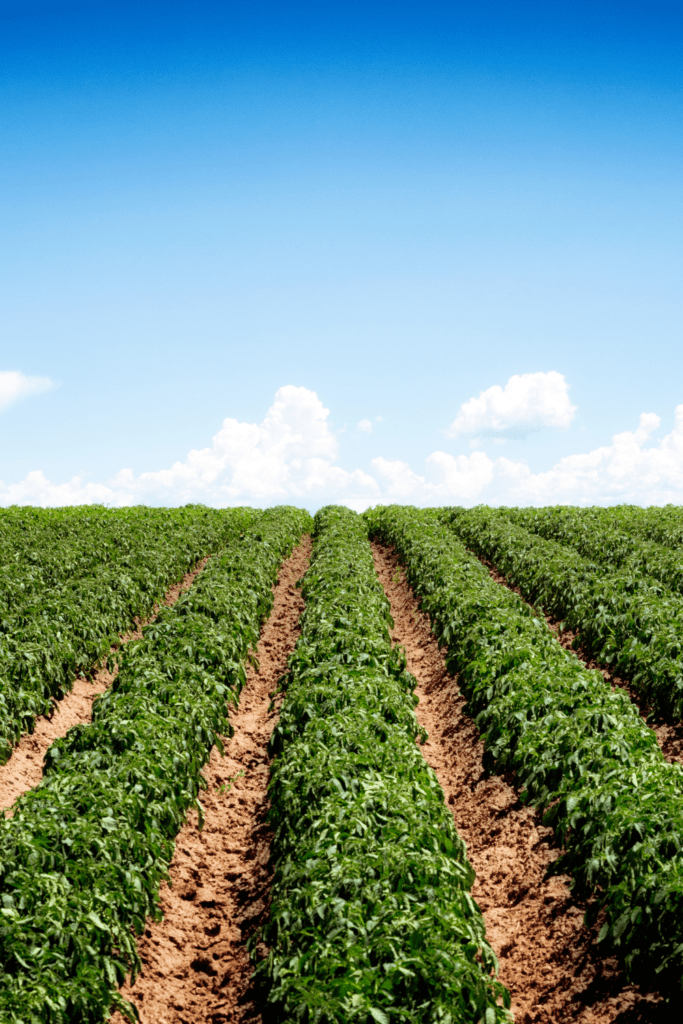
Idaho’s diverse landscapes, including mountains, forests, and high deserts, provide numerous off-grid living options. The state offers affordable land, lenient building codes in rural areas, and a supportive off-grid community network.
Are you dreaming of off-grid living in Idaho, where the rugged landscapes and pioneering spirit converge to offer a truly unique lifestyle? I don’t blame you since Idaho’s diverse climate and geography, from majestic mountains to rolling plains, provide a picturesque backdrop for off-grid adventures. With abundant sunshine and fertile soil, Idaho offers ample opportunities for sustainable living, whether you’re cultivating a garden or harnessing solar power.
Engage with the vibrant off-grid community initiatives scattered throughout the state, where like-minded individuals come together to share knowledge, resources, and support. While navigating Idaho’s legal and regulatory environment may pose challenges, the state’s commitment to self-sufficiency and environmental stewardship fosters an atmosphere conducive to off-grid living.
Climate and Geography In Idaho
Idaho’s climate offers a diverse range of experiences, from snowy winters perfect for cozying up by the fire to warm summers ideal for outdoor exploration. With ample sunshine and fertile land, Idaho provides an ideal setting for off-grid enthusiasts to thrive.
Whether you’re drawn to the tranquility of mountain living or the serenity of rural landscapes, Idaho’s varied geography offers endless opportunities to connect with nature and embrace a sustainable lifestyle off the grid.
- Rocky Mountains: Idaho is home to a portion of the Rocky Mountains, providing stunning mountain views and opportunities for outdoor recreation such as hiking, skiing, and camping.
- High Desert: Parts of Idaho, particularly in the southern and eastern regions, have a high desert climate characterized by hot summers, cold winters, and low precipitation, making it suitable for off-grid solar energy generation.
- Forested Areas: Idaho boasts vast expanses of national forests and wilderness areas, providing off-grid residents with opportunities for hunting, fishing, and logging, as well as access to timber resources for building and heating.
- Rivers and Lakes: Idaho is abundant in natural water sources, including rivers, lakes, and reservoirs, providing off-grid residents with opportunities for fishing, boating, and water-based recreation, as well as access to fresh water for drinking and irrigation.
More Climate and Geography In Idaho
- Agricultural Land: Idaho has fertile agricultural land in the Snake River Plain and other valleys, offering off-grid residents opportunities for sustainable farming, gardening, and livestock raising to supplement their food supply.
- Varied Terrain: Idaho’s terrain includes mountains, valleys, plateaus, and plains, offering off-grid residents a variety of options for building sustainable homes, establishing gardens, and creating off-grid infrastructure.
- Four Seasons: Idaho experiences four distinct seasons, with hot summers, cold winters, and moderate spring and fall seasons, providing off-grid residents with diverse seasonal experiences and challenges for sustainable living.
- Remote Locations: Many off-grid properties in Idaho are situated in remote and secluded areas, providing residents with privacy, tranquility, and opportunities for self-sufficiency away from urban centers.
Off-Grid Communities In Idaho
Are you considering off-grid communities in Idaho, where the spirit of adventure and sustainability thrives amidst the breathtaking landscapes of the Gem State? Joining an off-grid community here means becoming part of a close-knit family of like-minded individuals who share a passion for living off the grid and embracing a simpler, more sustainable way of life.
Whether nestled in the majestic mountains, surrounded by tranquil forests, or situated in the vast plains, off-grid communities in Idaho offer a warm welcome and a sense of belonging. From collaborative gardening projects to shared renewable energy systems and communal gatherings, these communities foster a spirit of camaraderie and support that enriches the off-grid experience.
- Salmon River Valley: Located in central Idaho, the Salmon River Valley offers stunning scenery, abundant wildlife, and access to outdoor recreational activities such as fishing, hunting, and hiking.
- Sawtooth Mountains: Situated in central Idaho, the Sawtooth Mountains are known for their rugged beauty, pristine lakes, and wilderness areas, providing off-grid residents with opportunities for solitude and outdoor adventure.
- Clearwater Mountains: Located in northern Idaho, the Clearwater Mountains offer remote and secluded off-grid living opportunities amidst dense forests, mountain streams, and rugged terrain.
- Lost River Valley: Situated in central Idaho, the Lost River Valley is a remote and sparsely populated area known for its sweeping vistas, high desert landscapes, and opportunities for off-grid homesteading.
More Off-Grid Communities In Idaho
- Lemhi Valley: Located in eastern Idaho, the Lemhi Valley is a fertile agricultural region surrounded by mountains, offering off-grid residents opportunities for farming, ranching, and outdoor recreation.
- Camas Prairie: Situated in central Idaho, Camas Prairie is a vast expanse of rolling hills and grasslands, providing off-grid residents with opportunities for agricultural pursuits and rural living.
- Owyhee Mountains: Located in southwestern Idaho, the Owyhee Mountains offer rugged terrain, breathtaking scenery, and opportunities for off-grid living in a remote and isolated environment.
- Hells Canyon: Situated along the Idaho-Oregon border, Hells Canyon is North America’s deepest river gorge, offering off-grid residents opportunities for outdoor recreation, solitude, and connection with nature.
- Palouse Region: Located in northern Idaho, the Palouse Region is known for its rolling hills, fertile farmland, and small towns, providing off-grid residents with opportunities for agricultural activities and rural living.
- Snake River Plain: Situated in southern Idaho, the Snake River Plain is a vast agricultural region with fertile soil and access to water resources, offering off-grid residents opportunities for farming, gardening, and rural living.
Legal and Regulatory Environment In Idaho for Off-Grid Living
I want to discuss the legal and regulatory environment in Idaho for off-grid living, where understanding the rules ensures a smooth journey toward sustainability and self-sufficiency. Idaho’s zoning laws vary across counties, so researching local ordinances is key to determining where and how off-grid properties can be developed.
Building codes set statewide standards for construction, covering aspects like structural integrity and safety measures. Permits may be required for land use, construction, and environmental impact assessments to ensure compliance with regulations. Water rights laws govern access to natural water sources, while environmental regulations protect Idaho’s pristine landscapes and wildlife habitats. Renewable energy incentives offer opportunities for off-grid residents to offset costs through tax credits and grants.
By navigating Idaho’s legal landscape with diligence and understanding, we can embrace the off-grid lifestyle responsibly and thrive in harmony with the Gem State’s natural beauty.
- Zoning Laws: Research local zoning ordinances to determine where off-grid properties can be developed and what types of structures are permitted.
- Building Codes: Ensure compliance with statewide building codes, which set standards for construction safety, structural integrity, and energy efficiency.
- Land Use Permits: Obtain necessary permits for land use, construction, and environmental impact assessments to ensure compliance with regulations.
- Water Rights: Understand water rights laws governing access to natural water sources, such as rivers, lakes, and wells, for off-grid use.
More Legal and Regulatory Environment In Idaho for Off-Grid Living
- Environmental Regulations: Comply with regulations aimed at protecting Idaho’s natural resources, including laws governing land use, wildlife protection, and waste management.
- Renewable Energy Incentives: Take advantage of incentives and rebates for renewable energy projects, such as solar, wind, and hydroelectric systems, to offset costs and promote sustainability.
- Off-Grid Septic Systems: Ensure compliance with regulations for off-grid wastewater management, including the installation and maintenance of septic systems.
- Fire Safety Regulations: Implement fire prevention measures and comply with regulations aimed at reducing the risk of wildfires, especially in remote off-grid areas.
- Right to Access and Easements: Understand property boundaries, access rights, and easement agreements, especially in rural or wilderness areas.
- Off-Grid Living Ordinances: Research local ordinances and regulations specific to off-grid living, such as restrictions on composting toilets, rainwater harvesting, or alternative energy systems.
Considering Idaho for Your Off-Grid Living
However, the cost of living and land availability in Idaho’s desirable rural areas may present obstacles for some, requiring careful planning and budgeting. Nevertheless, with determination and a pioneering spirit, Idaho beckons with boundless opportunities for a fulfilling off-grid lifestyle amidst the beauty of the Gem State.
New Mexico
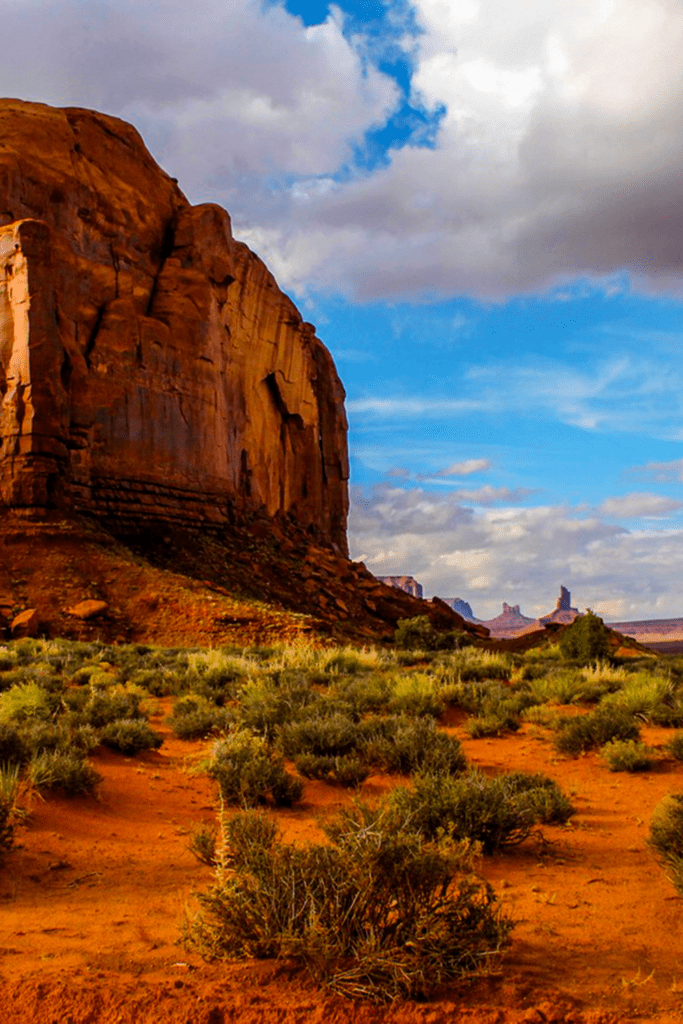
New Mexico’s sunny climate and vast expanses of land make it an attractive choice for off-grid living. The state’s desert landscape offers ample opportunities for solar power generation, while its relatively low population density provides solitude and privacy.
Have you dreamt of off-grid living in New Mexico, where the vibrant landscapes and rich cultural heritage beckon adventurers seeking a sustainable lifestyle? Have you imagined yourself immersed in the rugged beauty of the desert, surrounded by ancient mesas, towering red rock formations, and endless skies that stretch to the horizon?
In New Mexico, off-grid living isn’t just a lifestyle – it’s a journey of self-discovery and connection to the land. Whether you’re drawn to the tranquility of rural homesteading or the artistic energy of off-grid communities, New Mexico offers boundless opportunities for personal growth and fulfillment.
Climate and Geography In New Mexico
Have you been dreaming about the diverse landscapes and climates of New Mexico, where off-grid living enthusiasts find a haven amidst the stunning beauty of the Southwest? Have you pictured yourself surrounded by the majestic peaks of the Sangre de Cristo Mountains, the vast expanses of the Chihuahuan Desert, or the lush green valleys of the Rio Grande?
In New Mexico, the climate varies from arid desert to alpine forest, offering off-grid residents a wide range of environments to explore and thrive in. With over 300 days of sunshine annually, solar energy is abundant, making it an ideal renewable resource for off-grid power systems. From the cool mountain air of Taos to the warm desert breezes of Albuquerque, New Mexico’s diverse geography provides endless opportunities for off-grid living adventures. Here is a list of off-grid areas to consider in New Mexico.
Off-Grid Communities In New Mexico
- Earthship Biotecture: Known for its sustainable and off-grid homes built using recycled materials, Earthship Biotecture in Taos is a thriving community dedicated to eco-friendly living and self-sufficiency.
- Greater World Earthship Community: Situated near Taos, this off-grid community features Earthship homes designed to be entirely self-sufficient, with solar power, rainwater harvesting, and composting toilets.
- El Morro EcoVillage, Ramah: Located in the high desert of western New Mexico, El Morro EcoVillage is a sustainable community focused on ecological stewardship, organic farming, and off-grid living.
- Tres Orejas Sustainable Community: Nestled in the mountains outside of Taos, Tres Orejas Sustainable Community is committed to off-grid living, permaculture, and renewable energy.
- The Mesa, Las Cruces: Situated in the desert near Las Cruces, The Mesa is an off-grid community where residents live in sustainable homes powered by solar energy and participate in organic gardening and conservation efforts.
- Rancho Gallina, Santa Fe: Located just outside of Santa Fe, Rancho Gallina is an eco-retreat and off-grid bed and breakfast featuring sustainable adobe casitas, organic gardens, and renewable energy systems.
- Agua Sarca, Abiquiu: Situated in the foothills of the Sangre de Cristo Mountains near Abiquiu, Agua Sarca is an off-grid community focused on sustainable living, organic farming, and alternative building techniques.
- The Field Institute of Taos: This off-grid community in Taos offers educational programs and workshops on sustainable living, permaculture, and natural building techniques, attracting individuals interested in learning about off-grid living.
Legal and Regulatory Environment In New Mexico for Off-Grid Living
In New Mexico, zoning laws vary across counties and municipalities, so it’s essential to research local ordinances to determine property use and building regulations. Building codes set statewide standards for construction safety and energy efficiency, ensuring our off-grid homes are built to withstand the unique challenges of our diverse landscapes.
We must obtain permits for land use, construction, and environmental assessments to comply with regulations and protect our natural resources. Water rights laws govern access to natural water sources, while environmental regulations safeguard New Mexico’s breathtaking landscapes and wildlife habitats. Renewable energy incentives offer opportunities for off-grid residents to harness the power of the sun and wind while reducing our carbon footprint.
By navigating New Mexico’s legal landscape with diligence and understanding, we can embrace the off-grid lifestyle responsibly and thrive in harmony with the beauty of this state.
Considering New Mexico for Your Off-Grid Living
As someone considering New Mexico for your off-grid journey, you’re stepping into a realm of endless sunshine, rugged mountains, and ancient cultural heritage. Here, sustainability isn’t just a lifestyle – it’s a way of life deeply rooted in our connection to the land and our commitment to future generations.
Whether you’re drawn to the artistic energy of Taos, the tranquility of the high desert, or the vibrant communities of Santa Fe, New Mexico offers boundless opportunities for self-discovery, adventure, and connection with nature.
Oregon
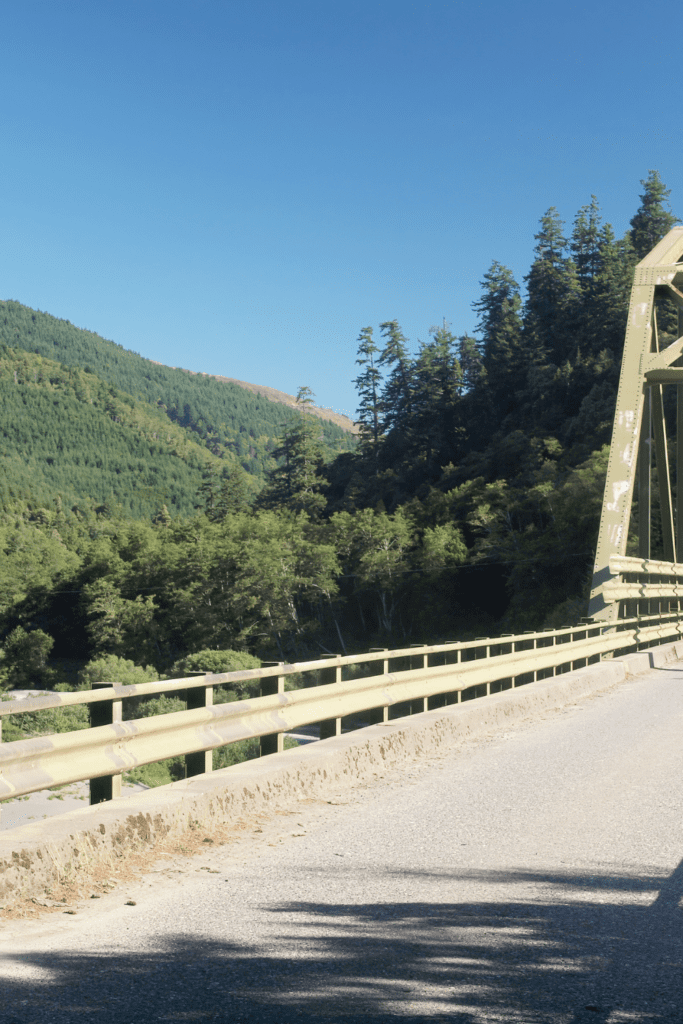
Known for its progressive attitudes and abundant natural beauty, Oregon is a popular destination for off-grid living. The state’s temperate climate, fertile land, and environmentally conscious communities make it an inviting choice for those seeking a sustainable lifestyle off the grid.
If you have been thinking of off-grid living in New Mexico, where the rugged landscapes and rich cultural tapestry offer a unique backdrop for sustainable living, we can talk some more! This diverse climate and geography, from the arid deserts to the majestic mountains, provide an ideal canvas for off-grid enthusiasts to thrive. Embracing the spirit of self-sufficiency and community, off-grid initiatives across the state foster a sense of camaraderie and shared values.
However, navigating the legal and regulatory landscape can pose challenges, requiring careful attention to local ordinances and building codes. Despite these hurdles, the allure of lower costs of living and the abundance of available land make New Mexico an enticing destination for those seeking an off-grid lifestyle.
Climate and Geography In Oregon
If you are interested in learning about off-grid living in Oregon, where the diverse climate and geography create an ideal environment for sustainable living adventures, then keep reading! I would like for you to picture yourself surrounded by the lush forests of the Pacific Northwest, the rugged coastline, and the majestic Cascade Mountains. Oregon’s climate varies from temperate rainforests along the coast to semi-arid deserts in the east, offering off-grid enthusiasts a wide range of environments to explore and thrive in.
With ample rainfall and abundant natural resources, including rivers, lakes, and fertile soil, Oregon provides an ideal setting for off-grid living. Whether you’re drawn to the tranquility of rural homesteading or the vibrant energy of off-grid communities, Oregon offers boundless opportunities for connection with nature and sustainable living practices.
- Coastal Climate: Along the Oregon coast, the climate is characterized by mild temperatures, abundant rainfall, and dense forests, providing off-grid residents with opportunities for rainwater harvesting, hydroelectric power generation, and sustainable forestry practices.
- Cascade Mountains: In the Cascade Range, which runs through the western part of the state, off-grid residents can experience diverse climates ranging from temperate rainforests to alpine tundra, offering opportunities for off-grid living in remote mountain settings.
- Willamette Valley: Situated between the Coast Range and the Cascade Mountains, the Willamette Valley has a temperate climate with fertile soil, making it ideal for off-grid farming, gardening, and sustainable living practices.
- High Desert: Eastern Oregon is characterized by a high desert climate with hot summers, cold winters, and low precipitation, providing off-grid residents with opportunities for solar energy generation, dryland farming, and self-sufficient living in remote desert landscapes.
More Climate and Geography In Oregon
- Columbia River Gorge: The Columbia River Gorge, located along the border between Oregon and Washington, offers off-grid residents opportunities for wind energy generation, outdoor recreation, and sustainable living in a scenic river canyon setting.
- Rogue River Valley: In southwestern Oregon, the Rogue River Valley has a Mediterranean climate with mild winters and hot summers, providing off-grid residents with opportunities for gardening, fruit orchards, and vineyards in a scenic valley setting.
- Coastal Range: The Coast Range runs along the western edge of Oregon, providing off-grid residents with opportunities for forested living, wildlife habitat, and sustainable forestry practices in a remote and rugged landscape.
- Klamath Basin: Located in southern Oregon, the Klamath Basin has a semi-arid climate with sagebrush steppe, marshes, and lakes, providing off-grid residents with opportunities for wildlife habitat, birdwatching, and sustainable living in a remote basin setting.
- Central Oregon Plateau: The Central Oregon Plateau, also known as the High Desert, has a dry climate with sagebrush steppe, lava fields, and volcanic peaks, providing off-grid residents with opportunities for solar energy generation, stargazing, and outdoor recreation in a remote desert landscape.
- Willamette River Valley: The Willamette River Valley, located in western Oregon, has a temperate climate with fertile soil, providing off-grid residents with opportunities for farming, gardening, and sustainable living practices in a scenic river valley setting.
Off-Grid Communities In Oregon
If you are like me, where like-minded individuals come together to embrace sustainability, self-sufficiency, and connection with nature, then keep reading! As someone interested in off-grid living, you’ll find a warm welcome in Oregon’s diverse communities, each offering its unique blend of creativity, innovation, and camaraderie.
From the lush forests of the Pacific Northwest to the rugged landscapes of the high desert, off-grid communities in Oregon thrive amidst the stunning beauty of the natural world. Whether you’re seeking a remote mountain retreat, a coastal haven, or a sustainable urban oasis, Oregon has something for everyone.
- Southern Oregon Coast: This region offers a rugged coastline, dense forests, and mild weather, making it ideal for off-grid living near communities like Gold Beach or Port Orford.
- Eastern Oregon High Desert: Areas such as Lake County or Harney County offer vast stretches of high desert terrain with low population density, providing opportunities for remote off-grid living.
- Willamette Valley Foothills: The foothills of the Cascade Mountains in the Willamette Valley, near towns like Eugene or Corvallis, offer scenic landscapes and fertile soil for off-grid homesteading.
- Central Oregon Plateau: Counties like Deschutes or Crook offer high desert landscapes with plenty of sunshine, making them suitable for off-grid living with opportunities for solar energy generation.
More Off-Grid Communities In Oregon
- Klamath Basin: Located in southern Oregon, the Klamath Basin offers expansive sagebrush steppe landscapes with opportunities for off-grid living near towns like Klamath Falls or Lakeview.
- Columbia River Gorge: The scenic Columbia River Gorge offers opportunities for off-grid living with access to wind energy, outdoor recreation, and stunning vistas near towns like Hood River or The Dalles.
- Southwestern Oregon Mountains: Areas such as Josephine County or Douglas County offer mountainous terrain, dense forests, and abundant wildlife, providing opportunities for remote off-grid living.
- Eastern Oregon Blue Mountains: Counties like Union or Grant offer remote mountain landscapes with opportunities for off-grid living and outdoor recreation, including hiking, fishing, and hunting.
- Coastal Range: The Coast Range offers remote forested areas with opportunities for off-grid living near towns like Tillamook or Florence, providing access to both coastal and mountain environments.
- Rogue River Valley: Located in southwestern Oregon, the Rogue River Valley offers mild weather, fertile soil, and opportunities for off-grid living near towns like Grants Pass or Medford.
Legal and Regulatory Environment In Oregon for Off-Grid Living
Oregon’s state’s zoning laws vary across counties and municipalities. Researching local ordinances is crucial to determining property use and building regulations. Building codes set statewide standards for construction safety and energy efficiency. This ensures our off-grid homes are built to withstand the unique challenges of our diverse landscapes. Permits for land use, construction, and environmental assessments are required to comply with regulations and protect our natural resources.
Water rights laws govern access to natural water sources, while environmental regulations safeguard Oregon’s stunning landscapes and wildlife habitats. Renewable energy incentives offer opportunities for off-grid residents to harness the power of the sun and wind while reducing our carbon footprint.
- Zoning Laws: Research local zoning ordinances to determine property use and building regulations.
- Building Codes: Ensure compliance with statewide building codes for construction safety and energy efficiency.
- Land Use Permits: Obtain necessary permits for land development, construction, and environmental assessments.
- Water Rights: Understand laws governing access to natural water sources for off-grid use.
- Environmental Regulations: Comply with laws protecting Oregon’s natural resources and wildlife habitats.
- Renewable Energy Incentives: Take advantage of incentives for renewable energy projects to offset costs and promote sustainability.
- Off-Grid Septic Systems: Adhere to regulations for off-grid wastewater management and septic system installation.
- Fire Safety Regulations: Implement measures to prevent wildfires and adhere to regulations for fire safety.
- Right to Access and Easements: Understand property boundaries, access rights, and easement agreements.
- Off-Grid Living Ordinances: Research local ordinances pertaining to off-grid living practices and alternative systems.
Considering Oregon for Your Off-Grid Living
As you consider Oregon for your off-grid adventure, you’re stepping into a realm of boundless opportunities for sustainability, self-sufficiency, and connection with nature. Whether you’re drawn to the lush forests of the Pacific Northwest, the rugged coastlines of the Oregon Coast, or the serene beauty of the high desert, Oregon offers a myriad of environments to explore and thrive in. Embrace the spirit of innovation and creativity as you join our welcoming community of like-minded individuals who share a passion for sustainable living and a deep appreciation for the natural world.
Texas
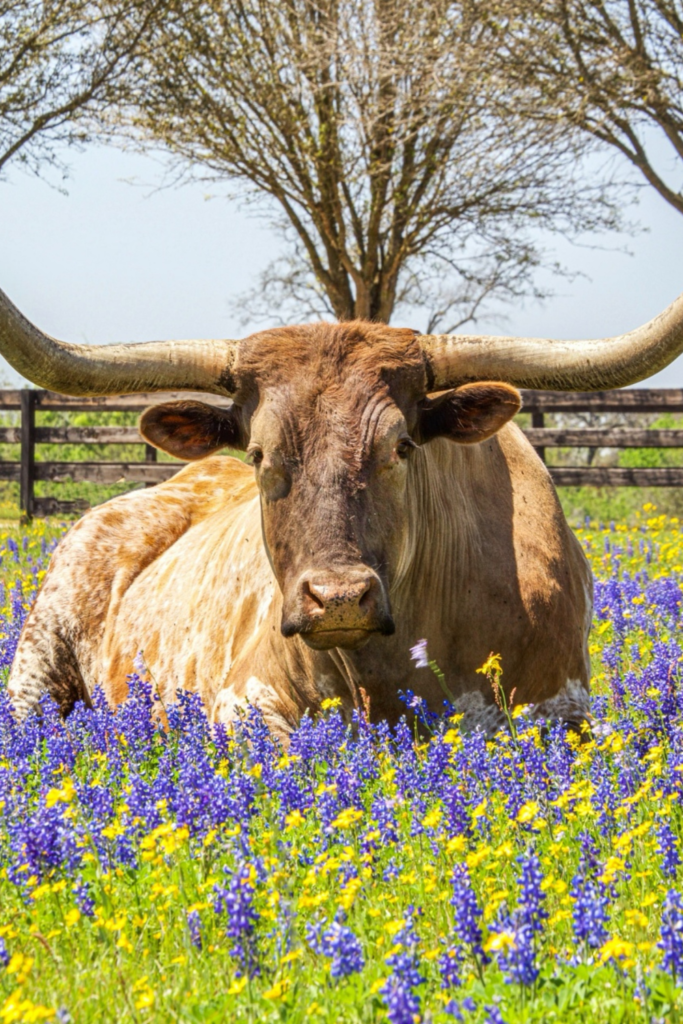
Texas offers a diverse range of landscapes. This includes coastal plains to rolling hills and desert terrain, providing off-grid enthusiasts with plenty of options. The state’s lenient zoning laws and abundant sunshine make it conducive to off-grid living, particularly in rural areas.
If you have dreamed of living off-grid in Texas, where the diverse landscapes and rich cultural heritage create an exciting environment for sustainable living, then keep reading! Texas boasts a variety of climates and geographies, from the arid deserts of West Texas to the lush forests of East Texas, providing ample opportunities for off-grid enthusiasts to find their perfect slice of paradise.
Texas is home to numerous off-grid community initiatives. It’s where like-minded individuals come together to share resources, knowledge, and experiences, fostering a sense of camaraderie and support. However, navigating the legal and regulatory environment can pose challenges. This requires diligence and research to ensure compliance with local ordinances and building codes.
Despite these hurdles, the cost of living in Texas is relatively low, and land availability is plentiful, making it an attractive destination for those seeking a simpler, more sustainable way of life. Don’t let challenges keep you from your dreams!
Climate and Geography In Texas
Texas boasts a range of climates. This includes the humid subtropical climate of the Gulf Coast to the arid desert climate of the western regions. With over 200 sunny days a year on average, Texas offers abundant sunshine. This makes it an ideal location for off-grid solar energy systems. Whether you’re drawn to the coastal marshes, piney woods, or mountainous terrain, Texas provides off-grid enthusiasts with a wealth of environments to explore and thrive in. If you are interested in calling rural Texas your home, keep reading!
Off-Grid Communities In Texas
As someone interested in off-grid living, you’ll find a warm welcome in Texas’s diverse communities. Each of these offers its unique blend of creativity, resilience, and camaraderie. From the serene desert landscapes of Terlingua to the rolling hills of the Texas Hill Country, this state boasts a variety of off-grid living options for those seeking a simpler, more self-sufficient way of life.
Whether you’re drawn to the artistic enclave of Marfa or the tranquil countryside of Fredericksburg, Texas, offers boundless opportunities to connect with nature, build community, and embrace sustainable living practices. Here are some off-grid communities to consider for Texas.
- Terlingua: Located in the Big Bend region, Terlingua is a remote community known for its off-grid living opportunities amidst the stunning desert landscapes.
- Marfa: Situated in West Texas, Marfa is a small town with an artistic community and off-grid living options available in the surrounding desert.
- Alpine: Also in the Big Bend region, Alpine offers off-grid living opportunities amidst its mountainous terrain and scenic beauty.
- Fredericksburg: Located in the Texas Hill Country, Fredericksburg is a charming town with off-grid living options available in the surrounding rural areas.
- Bastrop: Situated near Austin, Bastrop offers off-grid living opportunities in its rural outskirts, with access to forests, rivers, and natural beauty.
- Junction: Located in the Texas Hill Country, Junction is a small town surrounded by rugged terrain and offers off-grid living options for those seeking a rural lifestyle.
- Llano: Also in the Texas Hill Country, Llano is known for its scenic landscapes and off-grid living opportunities in the surrounding countryside.
- Brackettville: Situated in West Texas, Brackettville offers off-grid living options in its rural areas, with access to wide-open spaces and natural beauty.
Legal and Regulatory Environment In Texas for Off-Grid Living
The Lone Star State’s zoning laws vary across counties and municipalities. Researching local ordinances is crucial to determine property use and building regulations. Building codes set statewide standards for construction safety and energy efficiency. This ensures our off-grid homes are built to withstand the unique challenges of this state’s diverse landscapes.
Permits for land use, construction, and environmental assessments are required to comply with regulations and protect our natural resources. Water rights laws govern access to natural water sources, while environmental regulations safeguard Texas’ stunning landscapes and wildlife habitats. Renewable energy incentives offer opportunities for off-grid residents to harness the power of the sun and wind while reducing our carbon footprint.
By navigating Texas’ legal landscape with care and understanding, we can embrace the off-grid lifestyle responsibly and thrive in harmony with the beauty of our state.
- Zoning Laws: Research local zoning ordinances to determine property use and building regulations for off-grid living.
- Building Codes: Ensure compliance with statewide building codes for construction safety and energy efficiency.
- Land Use Permits: Obtain necessary permits for land development, construction, and environmental assessments.
- Water Rights: Understand laws governing access to natural water sources for off-grid use, including regulations for rainwater harvesting and well drilling.
More Legal and Regulatory Environment In Texas for Off-Grid Living
- Environmental Regulations: Comply with laws protecting Texas’ natural resources, wildlife habitats, and air quality.
- Renewable Energy Incentives: Take advantage of state and federal incentives for renewable energy projects, such as solar and wind power systems.
- Septic System Regulations: Adhere to regulations for off-grid wastewater management and septic system installation.
- Fire Safety Regulations: Implement measures to prevent wildfires and adhere to regulations for fire safety, particularly in rural and forested areas.
- Right to Access and Easements: Understand property boundaries, access rights, and easement agreements, especially in rural areas.
- Off-Grid Living Ordinances: Research local ordinances pertaining to off-grid living practices and alternative systems, such as composting toilets and off-grid utilities.
Considering Texas for Your Off-Grid Living
As you contemplate Texas for your off-grid journey, envision yourself amidst the rolling hills of the Texas Hill Country, the vast expanses of the West Texas plains, or the serene desert landscapes of the Big Bend region. Texas offers a diverse range of environments to explore and thrive in, each with its unique charm and opportunities for sustainable living. From solar-powered homesteads to rainwater harvesting systems, off-grid enthusiasts in Texas embrace innovative solutions to live in harmony with nature.
Colorado
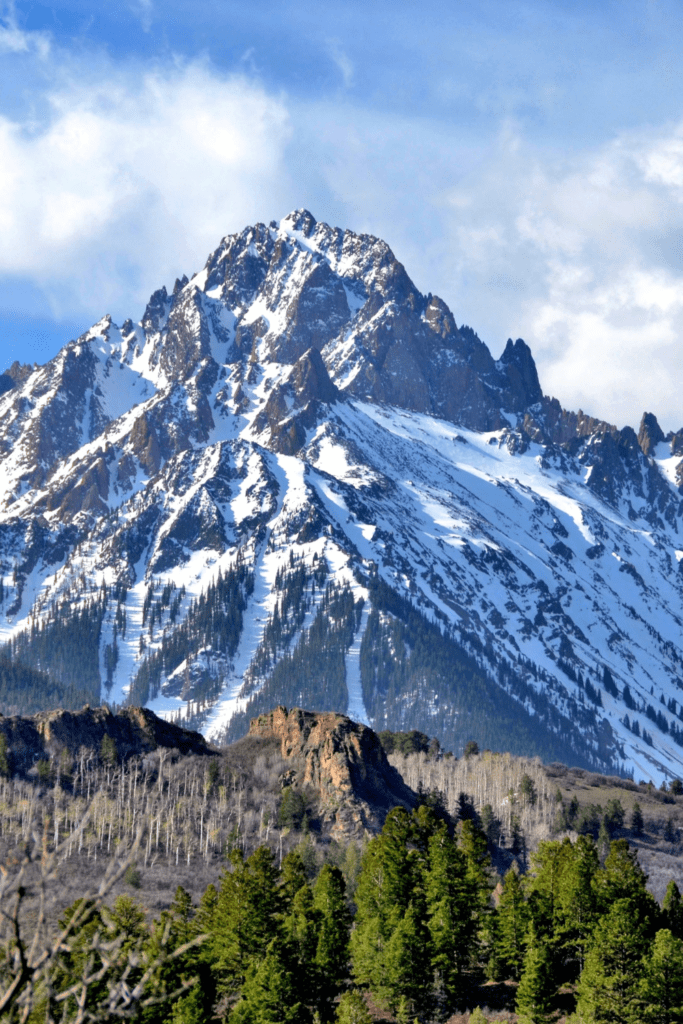
With its stunning mountain scenery and abundant outdoor recreational opportunities, Colorado is a favorite among off-grid adventurers. The state’s off-grid communities thrive on renewable energy sources like solar and wind power, supported by a culture of environmental stewardship.
If you are interested in off-grid living in Colorado, where the breathtaking landscapes and pioneering spirit create an ideal environment for sustainable living, then keep reading!
- Let’s dive into the essentials: First, Colorado’s climate and geography offer a diverse playground for off-grid enthusiasts, from the majestic Rocky Mountains to the arid plains of the Eastern Plains.
- Secondly, off-grid community initiatives thrive here, fostering a sense of camaraderie and collaboration among like-minded individuals who embrace self-sufficiency and environmental stewardship.
- Thirdly, while navigating the legal and regulatory environment may pose challenges, diligent research and compliance ensure a smooth journey toward off-grid living.
- Finally, Colorado’s reasonable cost of living and ample land availability make it an attractive destination for those seeking a simpler, more sustainable lifestyle.
Climate and Geography In Colorado
Living off the grid in Colorado offers a thrilling blend of diverse climates and stunning geography. From the majestic peaks of the Rocky Mountains to the sweeping plains of the Eastern Plains, Colorado’s landscape is as varied as it is breathtaking. As someone deeply passionate about sustainable living, I can assure you that Colorado’s climate provides ample opportunities for off-grid enthusiasts like us to thrive. With over 300 days of sunshine a year, harnessing solar power is not just practical, but highly effective.
Also, the state’s diverse geography means that whether you prefer the cool mountain air or the warmth of the high desert, you’ll find a spot that suits your lifestyle.
Off-Grid Communities In Colorado
- Diverse Climate Zones: Colorado boasts a range of climate zones, from alpine to semi-arid, offering off-grid enthusiasts a variety of environmental challenges and opportunities.
- Abundant Sunshine: With over 300 days of sunshine annually, Colorado provides ample solar energy potential for off-grid power generation, making it an ideal location for solar panel installation.
- Varied Geography: From the towering peaks of the Rocky Mountains to the vast plains of the Eastern Plains, Colorado’s diverse geography offers off-grid dwellers a wide range of landscapes to explore and settle in.
- Rich Natural Resources: Colorado is rich in natural resources such as timber, water, and wildlife, providing off-grid residents with opportunities for sustainable living through practices like rainwater harvesting and hunting.
- Outdoor Recreation: The state’s abundance of outdoor recreational opportunities, including hiking, skiing, and fishing, makes it an attractive destination for those seeking an off-grid lifestyle centered around a connection with nature.
- Seasonal Variations: Colorado experiences distinct seasonal changes, with hot summers and cold winters, providing off-grid residents with the chance to adapt their lifestyle and infrastructure to different weather conditions throughout the year.
- High Altitude: Much of Colorado lies at high altitudes, which can present challenges for off-grid living, such as colder temperatures and thinner air, but also offer benefits like cooler summers and breathtaking views.
Legal and Regulatory Environment In Colorado for Off-Grid Living
Navigating the legal and regulatory environment for off-grid living in Colorado is a journey I’ve found both fascinating and rewarding. I’ve looked into the intricacies of Colorado’s laws and regulations with enthusiasm. Fortunately, the state generally supports off-grid practices, offering various incentives and programs to encourage self-sufficiency and renewable energy usage. From permitting processes for alternative housing to regulations surrounding water rights and waste disposal, understanding the legal landscape is crucial.
- Alternative Building Codes: Colorado allows for alternative building methods such as straw bale, earthship, and tiny homes, with certain counties and municipalities having specific regulations regarding size, materials, and permits.
- Water Rights: Water rights regulations in Colorado are complex, with laws governing the collection, use, and storage of water. Off-grid residents may need to obtain permits for wells, rainwater harvesting systems, or water storage tanks, depending on their location and water source.
- Zoning Regulations: Zoning laws in Colorado vary by jurisdiction and can impact off-grid living, particularly in terms of land use, building setbacks, and minimum dwelling size requirements. It’s important for off-grid residents to research and comply with local zoning regulations.
- Renewable Energy Policies: Colorado has renewable energy policies that support off-grid living, including net metering, which allows residents to receive credit for excess energy generated by their renewable energy systems, such as solar panels or wind turbines.
More Legal and Regulatory Environment In Colorado for Off-Grid Living
- Waste Management: Off-grid residents in Colorado must adhere to regulations regarding waste disposal, including proper management of sewage, trash, and recycling. Composting toilets, greywater systems, and recycling programs may be required or recommended depending on local regulations.
- Fire Safety: Colorado has strict fire safety regulations, especially in wildfire-prone areas. Off-grid residents may need to implement fire mitigation measures such as defensible space, fire-resistant building materials, and evacuation plans to ensure compliance and safety.
- Land Use Permits: Depending on the specific location and intended use, off-grid residents may need to obtain permits for land use activities such as camping, gardening, or raising livestock. Permits may be required from federal, state, or local authorities, depending on the land jurisdiction.
Considering Colorado for Your Off-Grid Living
Yet, with a welcoming attitude from local authorities and a supportive community of like-minded individuals, I’ve found that overcoming these challenges is part of the adventure of off-grid living in Colorado.
Conclusion
In conclusion, setting out on the off-grid lifestyle opens doors to a world of freedom, self-reliance, and connection with nature. As we’ve explored the best states for off-grid living together, I hope you feel inspired and empowered to take the next step toward unplugging and thriving. Whether you’re drawn to the rugged wilderness of Alaska, the serene landscapes of Montana, or the sunny deserts of New Mexico, there’s a perfect off-grid haven waiting to welcome you with open arms. Remember, the journey to off-grid living is as much about the people you meet and the communities you join as it is about the land you inhabit. So, seize the opportunity to embrace this fulfilling lifestyle, and let the adventure begin!
Discovering the best states for off-grid living is just the beginning—learn more by reading How to Live on Raw Land.
Resources: Here are some helpful resources for further information.
- The Best States for Off Grid Living: A Comprehensive Guide – By TexasRealFood
- Best States to Live Off Grid – By EcoFlow Blog
- How to Pick the Best Place to Live Off the Grid – By Battle Born Batteries
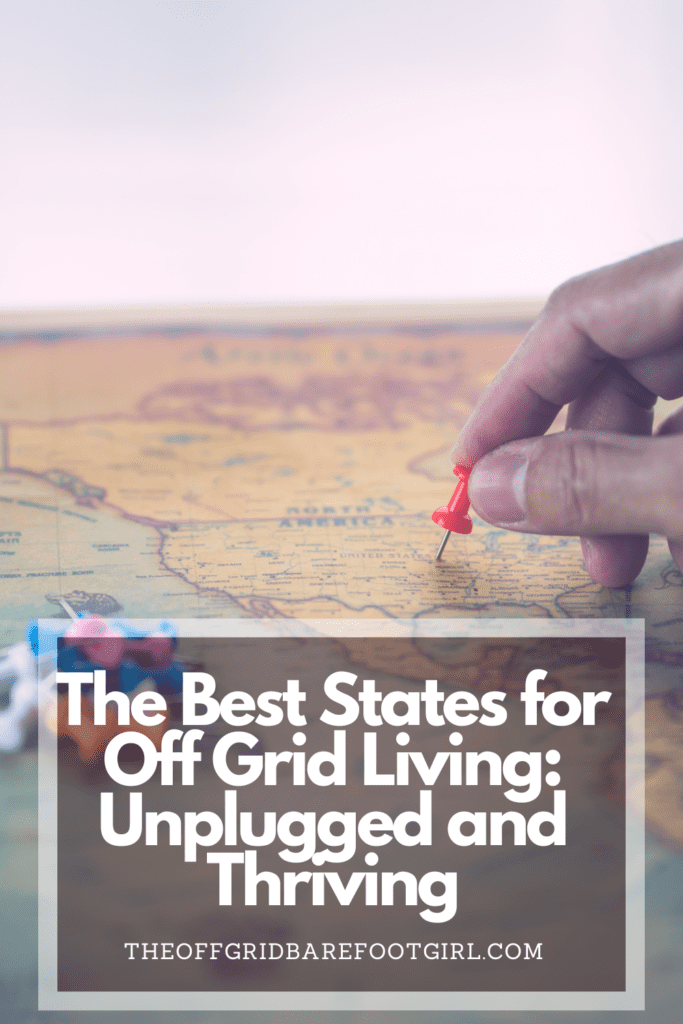
Frequently Asked Questions
1. What is off-grid living?
Off-grid living refers to a lifestyle where individuals or communities are self-sufficient and independent from public utilities such as electricity, water, and sewage systems. Instead of relying on centralized infrastructure, off-grid residents generate their own power through renewable energy sources like solar panels or wind turbines, collect and treat their own water from natural sources or rainwater, and manage waste through composting or other eco-friendly methods. Off-grid living often involves living in remote or rural areas where access to utilities is limited, although it can also be practiced in urban settings through innovative technologies and sustainable practices. This lifestyle promotes sustainability, resilience, and a deeper connection to nature, as individuals take responsibility for their own resources and environmental impact.
2. How do you determine the best states for off-grid living?
Determining the best states for off-grid living involves a careful assessment of various factors. Firstly, considering the climate is essential, as regions with ample sunshine and moderate temperatures are ideal for renewable energy generation and comfortable living conditions. Access to natural resources, including water, land for cultivation, and timber, is another critical consideration for sustaining off-grid lifestyles. Additionally, evaluating the legal and regulatory environment is vital, as supportive policies and lenient regulations can facilitate off-grid practices. Affordability, community support, and resilience to natural disasters also play significant roles in determining the suitability of a state for off-grid living.
3. How can I find off-grid communities or resources in a chosen state?
Finding off-grid communities or resources in a chosen state can be achieved through various methods. Firstly, online platforms and forums dedicated to off-grid living, such as websites, social media groups, and forums, often provide valuable resources and connections to like-minded individuals or communities. Additionally, attending off-grid living events, workshops, or conferences in the chosen state can facilitate networking and discovery of off-grid communities. Local community centers, environmental organizations, or sustainable living groups may also offer information or support for off-grid living initiatives. Lastly, reaching out to real estate agents specializing in rural or off-grid properties can help identify available land or properties within off-grid communities.
4. Are there specific laws or regulations to be aware of when living off-grid?
When living off-grid, it’s essential to be aware of specific laws and regulations that may impact your lifestyle. These can vary depending on factors such as location, land use, and building codes. Common considerations include zoning regulations, which dictate permissible land uses and building structures, and water rights laws, which govern access to and use of water sources. Additionally, waste management regulations may require compliance with disposal methods for sewage, trash, and recycling. Renewable energy policies, fire safety regulations, and health and safety standards may also apply. It’s crucial to thoroughly research and understand relevant laws and regulations to ensure compliance and avoid potential legal issues when living off-grid. Consulting with legal professionals or local authorities can provide further guidance on navigating the legal landscape of off-grid living.
Summary
I hope I have inspired you to live sustainably with these tips and products.
If you were encouraged by this post, I invite you to check out my FREE Printables Page for fun free printables, planners, and charts.
ENTER MY FREE Printables Page HERE
Here are some more of my gardening inspiration posts to check out!
How to Feed Your Family During the Government Shutdown
12 Best Tips for Creating an Eco-Friendly Household
Survival Lessons from the Great Depression
The Best 15 Homesteading Blogs to Follow for Inspiration
How to Criminal-Proof Your Home with These 5 Steps
How to Create Your Cottagecore Aesthetic Dream Home
Ideas for Rustic Living Room Vibes You’ll Love All Year Round!
How to Prep Your Home for Chilly Fall Nights
Bring Back the Magic of Fireflies and Lightning Bugs with Solar Power!
The Ultimate Portable Power Bank for Homesteaders and Preppers!
A Bug Out Bag That’s Actually Ready — When You Need It Most!
Magical Ways to Use Fairy Lights in Your Off-Grid Home
How to Live a Cozy Off-Grid Life
The Best Off-Grid Kitchen Tools for Indoors (No Power Needed!)
DIY Solar Made Simple: How I Powered My Off-Grid Life with Practical Preppers!
Sleeper Cells in America: What You Need to Know Now!
How People Are Surviving in Broken Cities with Broken Systems
When the World Hurts, We Prepare with Purpose
How to Live On Raw Land: Everything You Need to Know!
How to Do Off-Grid Laundry with Eco-Friendly Laundry Detergent!
Hollywood on Fire! What Secrets Are In the Ashes?
FEMA Concentration Camps? Are Echos of the Past Returning?
How Likely Is a Russian EMP? One Pulse Could Black Us Out!
What Dark Secrets Lie in The Bird Flu Symptoms?
The Blackout Sun: Who Is Blacking Out Our Sunlight?
More Posts!
How to Bug-In During a Deep Freeze!
‘FOGVID-24?’ What’s in the Mysterious Fog That’s Making Everyone Sick?
From Snow to Sow: Plan Your Spring Garden Now!
11 Fun Ways to Brighten Your Spring Garden with Personality
Top 10 Spring Garden Crops to Harvest in 30 Days and Eat Now!
The Best Survival Crops for Caloric Survival
More Posts!
My Victory Garden: What I Learned from 5+ Years
Why Every Family Should Have a Victory Garden in Their Backyard Now!
The Best Perennials for a Long-Term Survival Garden
The Best Essential Oils for Plants That Repel Garden Bugs
How to Grow Green Garden Peas: Perfect Plump Peas!
Hugelkultur: Does This Epic Pioneering Method Actually Work?
9 Ways to Celebrate Earthing Day in Your Garden!
Gardening Indoors: Secrets of Growing Your Food Inside!
How to DIY a Milk Jug Drip Irrigation System!
Why Cedar Mulch Is The Perfect Natural Weed Barrier
Gardening Projects
Onions: How to Grow Onions for Storage
Peas: How to Grow Garden Peas for a Bumper Crop
Carrots: How to Grow Carrots for a Bountiful Harvest
Prep Your Garden for Spring Planting with These Expert Tips!
How to Grow a Prepper Garden to Survive and Thrive
The Best Garden Tools You Need for a Productive Season
Fastest Growing Vegetables for Your Survival Garden
How to Grow Marigolds As Pest Control In Your Vegetable Garden
Must-Have Tools for a Successful Balcony Vegetable Garden
How to Effectively Combat Powdery Mildew in Your Garden
The Best Tips for Organic Gardening
How to Release Ladybugs In Your Garden for Organic Pest Control
More Posts!!
The Best Garden Snail Control Strategies
The Best Spring Vegetables to Grow in Your Garden
Seed Starter Mix: How To Make Your Organic Seed Starter Mix At Home
How to Grow a Productive Canning Garden
How to Plant and Grow a Salsa Garden
Easiest Heirloom Vegetable Seeds to Grow Now
How to Use the Hand Twist Claw Tiller: Tackling Tough Soil
More Fun Gardening Posts to Check Out!
Planning Your Garden: How to Plan a Vegetable Garden: Expert Green Thumb Tips!
Winterizing the Garden: How to Winterize Your Vegetable Garden: Step-by-Step Checklist
Mulching the Garden: How to Make Leaf Litter Mulch
Grow a Pumpkin Patch: How to Grow a Pumpkin Patch in Your Backyard
How to Grow a Fall Garden: 9 Best Fall Crops
Clever Ways to Incorporate Indoor Composting into Your Home
How to Start Composting for the Garden: A Step-by-Step Guide
The Ultimate Guide to Composting in Your Suburban Backyard
Why I Built A Survival Garden in My Backyard
16 Best Medicinal Herbs to Grow in Your Garden Now
Blessings,
The Off Grid Barefoot Girl





